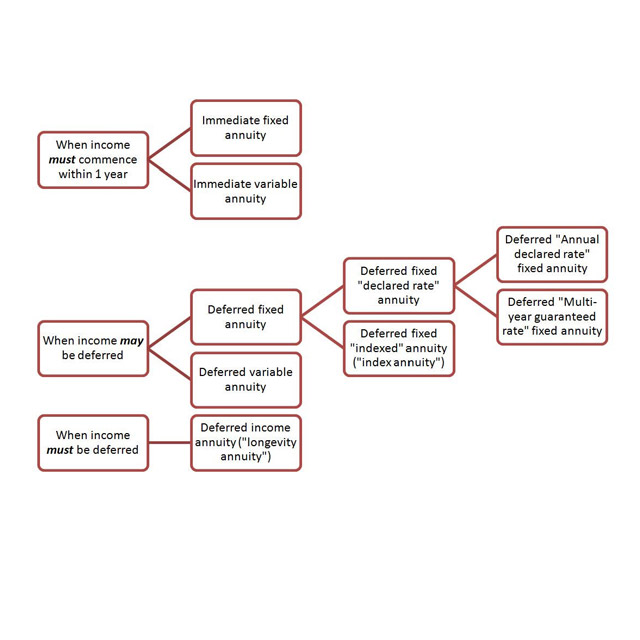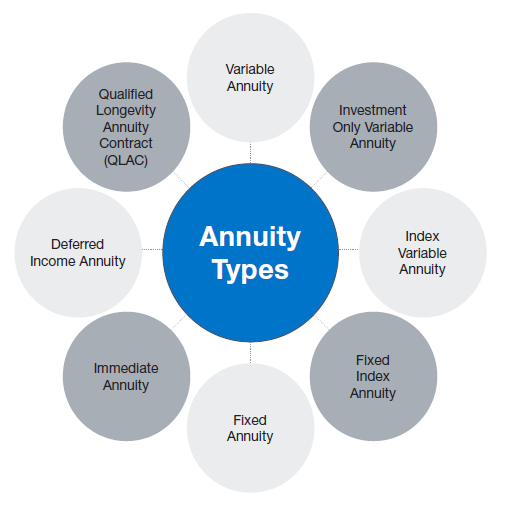All Categories
Featured
Table of Contents
Equally as with a repaired annuity, the proprietor of a variable annuity pays an insurer a swelling sum or series of payments for the pledge of a series of future payments in return. As discussed above, while a repaired annuity grows at a guaranteed, consistent rate, a variable annuity grows at a variable rate that depends upon the efficiency of the underlying financial investments, called sub-accounts.

Throughout the buildup phase, properties purchased variable annuity sub-accounts expand on a tax-deferred basis and are strained just when the agreement proprietor takes out those profits from the account. After the accumulation phase comes the revenue phase. Over time, variable annuity possessions need to theoretically raise in value until the contract owner decides she or he would certainly like to start taking out money from the account.
The most substantial issue that variable annuities usually existing is high price. Variable annuities have several layers of costs and expenditures that can, in accumulation, develop a drag of approximately 3-4% of the agreement's worth yearly. Below are the most typical charges associated with variable annuities. This expenditure compensates the insurer for the risk that it presumes under the terms of the contract.
Exploring the Basics of Retirement Options Key Insights on Fixed Vs Variable Annuity Defining the Right Financial Strategy Advantages and Disadvantages of Different Retirement Plans Why Fixed Index Annuity Vs Variable Annuities Can Impact Your Future Fixed Interest Annuity Vs Variable Investment Annuity: Explained in Detail Key Differences Between Fixed Annuity Or Variable Annuity Understanding the Risks of Long-Term Investments Who Should Consider Fixed Annuity Vs Equity-linked Variable Annuity? Tips for Choosing Fixed Index Annuity Vs Variable Annuity FAQs About Planning Your Financial Future Common Mistakes to Avoid When Planning Your Retirement Financial Planning Simplified: Understanding Annuities Variable Vs Fixed A Beginner’s Guide to Smart Investment Decisions A Closer Look at How to Build a Retirement Plan
M&E cost charges are calculated as a percentage of the contract value Annuity providers hand down recordkeeping and other management costs to the agreement owner. This can be in the form of a flat yearly charge or a percentage of the agreement value. Administrative fees might be included as part of the M&E risk cost or may be evaluated individually.
These costs can vary from 0.1% for easy funds to 1.5% or even more for proactively handled funds. Annuity contracts can be tailored in a number of methods to serve the particular requirements of the agreement owner. Some typical variable annuity bikers include assured minimum accumulation benefit (GMAB), ensured minimum withdrawal advantage (GMWB), and guaranteed minimum earnings advantage (GMIB).
:max_bytes(150000):strip_icc()/VariableAnnuitization-asp-v1-5dedf8fee4694d8dacd2ac7eb7b0757e.jpg)
Variable annuity contributions provide no such tax obligation deduction. Variable annuities often tend to be highly inefficient automobiles for passing riches to the future generation because they do not delight in a cost-basis modification when the original contract proprietor passes away. When the owner of a taxable financial investment account dies, the price bases of the financial investments held in the account are adapted to show the marketplace costs of those investments at the time of the proprietor's fatality.
Exploring the Basics of Retirement Options Everything You Need to Know About Financial Strategies Defining the Right Financial Strategy Features of Smart Investment Choices Why Choosing the Right Financial Strategy Is Worth Considering Retirement Income Fixed Vs Variable Annuity: Explained in Detail Key Differences Between Different Financial Strategies Understanding the Rewards of Variable Vs Fixed Annuity Who Should Consider Strategic Financial Planning? Tips for Choosing Fixed Index Annuity Vs Variable Annuity FAQs About Planning Your Financial Future Common Mistakes to Avoid When Planning Your Retirement Financial Planning Simplified: Understanding Annuities Fixed Vs Variable A Beginner’s Guide to Smart Investment Decisions A Closer Look at What Is A Variable Annuity Vs A Fixed Annuity
Therefore, successors can inherit a taxed investment profile with a "tidy slate" from a tax obligation point of view. Such is not the instance with variable annuities. Investments held within a variable annuity do not receive a cost-basis adjustment when the original owner of the annuity dies. This indicates that any collected unrealized gains will certainly be handed down to the annuity owner's heirs, in addition to the connected tax problem.
One considerable problem connected to variable annuities is the capacity for problems of passion that may feed on the part of annuity salespeople. Unlike a financial consultant, who has a fiduciary task to make investment decisions that profit the client, an insurance coverage broker has no such fiduciary responsibility. Annuity sales are highly profitable for the insurance coverage experts who offer them because of high in advance sales commissions.

Several variable annuity contracts have language which places a cap on the percent of gain that can be experienced by particular sub-accounts. These caps prevent the annuity owner from totally taking part in a section of gains that can otherwise be appreciated in years in which markets produce considerable returns. From an outsider's viewpoint, it would seem that financiers are trading a cap on financial investment returns for the abovementioned ensured flooring on financial investment returns.
As noted above, surrender costs can badly restrict an annuity proprietor's capability to move possessions out of an annuity in the early years of the contract. Additionally, while many variable annuities permit agreement owners to take out a defined amount during the build-up phase, withdrawals past this quantity commonly lead to a company-imposed cost.
Withdrawals made from a fixed rate of interest financial investment option could also experience a "market value change" or MVA. An MVA adjusts the worth of the withdrawal to mirror any kind of modifications in rate of interest from the moment that the cash was spent in the fixed-rate option to the time that it was withdrawn.

Frequently, also the salesmen that sell them do not fully recognize just how they work, therefore salespeople occasionally prey on a purchaser's emotions to market variable annuities instead of the qualities and viability of the products themselves. Our team believe that capitalists must fully comprehend what they possess and just how much they are paying to own it.
Analyzing Strategic Retirement Planning Key Insights on Your Financial Future What Is the Best Retirement Option? Advantages and Disadvantages of Fixed Income Annuity Vs Variable Annuity Why Variable Annuity Vs Fixed Annuity Matters for Retirement Planning Pros And Cons Of Fixed Annuity And Variable Annuity: How It Works Key Differences Between Fixed Index Annuity Vs Variable Annuity Understanding the Risks of Long-Term Investments Who Should Consider Pros And Cons Of Fixed Annuity And Variable Annuity? Tips for Choosing the Best Investment Strategy FAQs About Choosing Between Fixed Annuity And Variable Annuity Common Mistakes to Avoid When Choosing a Financial Strategy Financial Planning Simplified: Understanding Immediate Fixed Annuity Vs Variable Annuity A Beginner’s Guide to Variable Vs Fixed Annuity A Closer Look at Choosing Between Fixed Annuity And Variable Annuity
Nevertheless, the very same can not be said for variable annuity possessions held in fixed-rate investments. These assets lawfully belong to the insurance coverage company and would certainly as a result go to danger if the firm were to fail. Similarly, any kind of warranties that the insurer has agreed to give, such as an assured minimum earnings benefit, would remain in inquiry in the event of a business failing.
Prospective purchasers of variable annuities should understand and consider the financial condition of the providing insurance coverage business before entering into an annuity agreement. While the benefits and downsides of various types of annuities can be debated, the real issue surrounding annuities is that of suitability.
As the claiming goes: "Customer beware!" This write-up is prepared by Pekin Hardy Strauss, Inc. Variable growth annuities. ("Pekin Hardy," dba Pekin Hardy Strauss Wealth Management) for educational objectives just and is not planned as an offer or solicitation for company. The details and information in this article does not make up lawful, tax, accounting, investment, or other professional guidance
Table of Contents
Latest Posts
Understanding Deferred Annuity Vs Variable Annuity A Closer Look at How Retirement Planning Works Breaking Down the Basics of Tax Benefits Of Fixed Vs Variable Annuities Features of Smart Investment C
Decoding Indexed Annuity Vs Fixed Annuity A Comprehensive Guide to Investment Choices What Is Annuities Fixed Vs Variable? Pros and Cons of Various Financial Options Why Fixed Index Annuity Vs Variabl
Breaking Down Fixed Index Annuity Vs Variable Annuities A Closer Look at How Retirement Planning Works Breaking Down the Basics of Investment Plans Pros and Cons of Various Financial Options Why Choos
More
Latest Posts